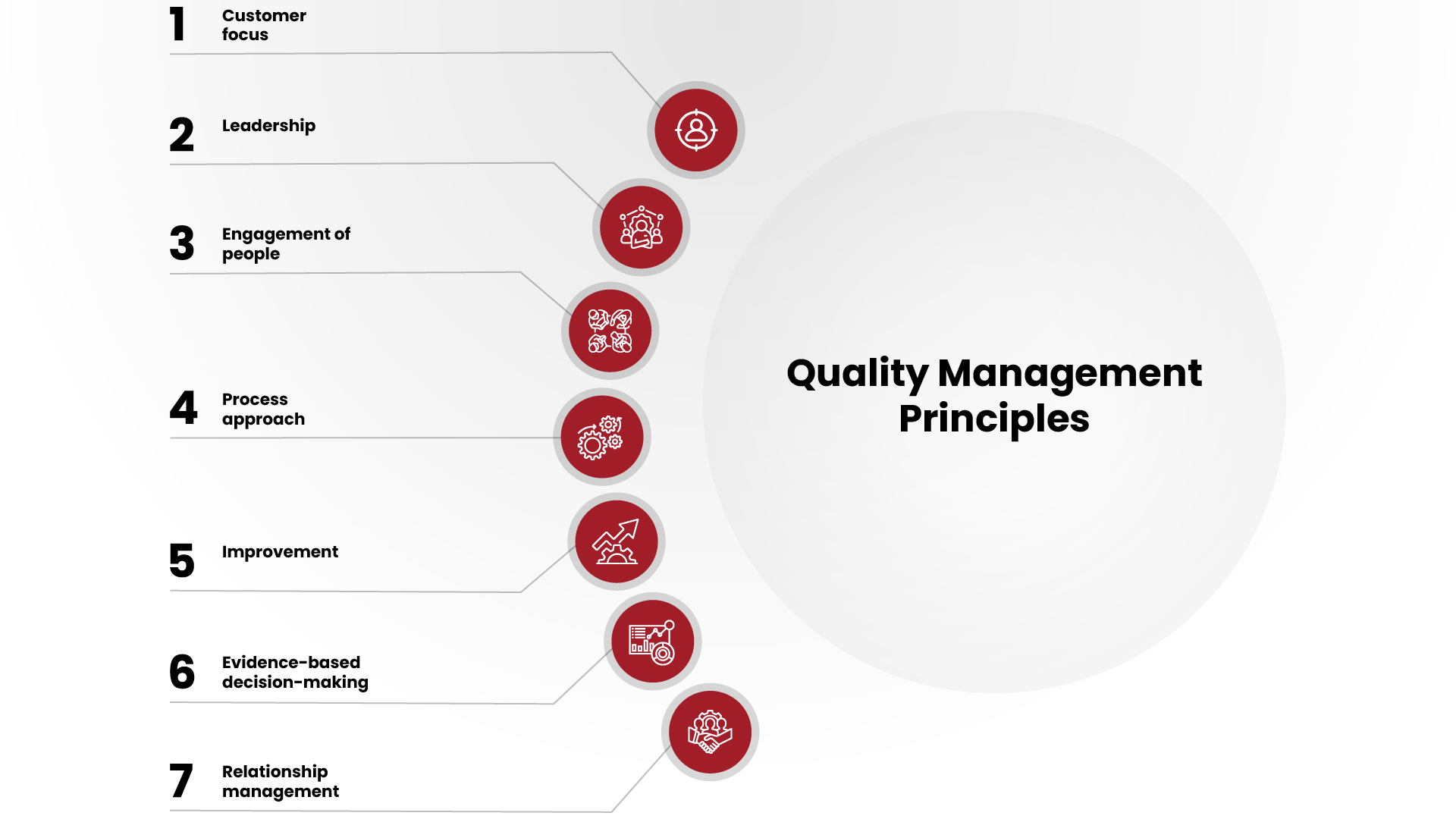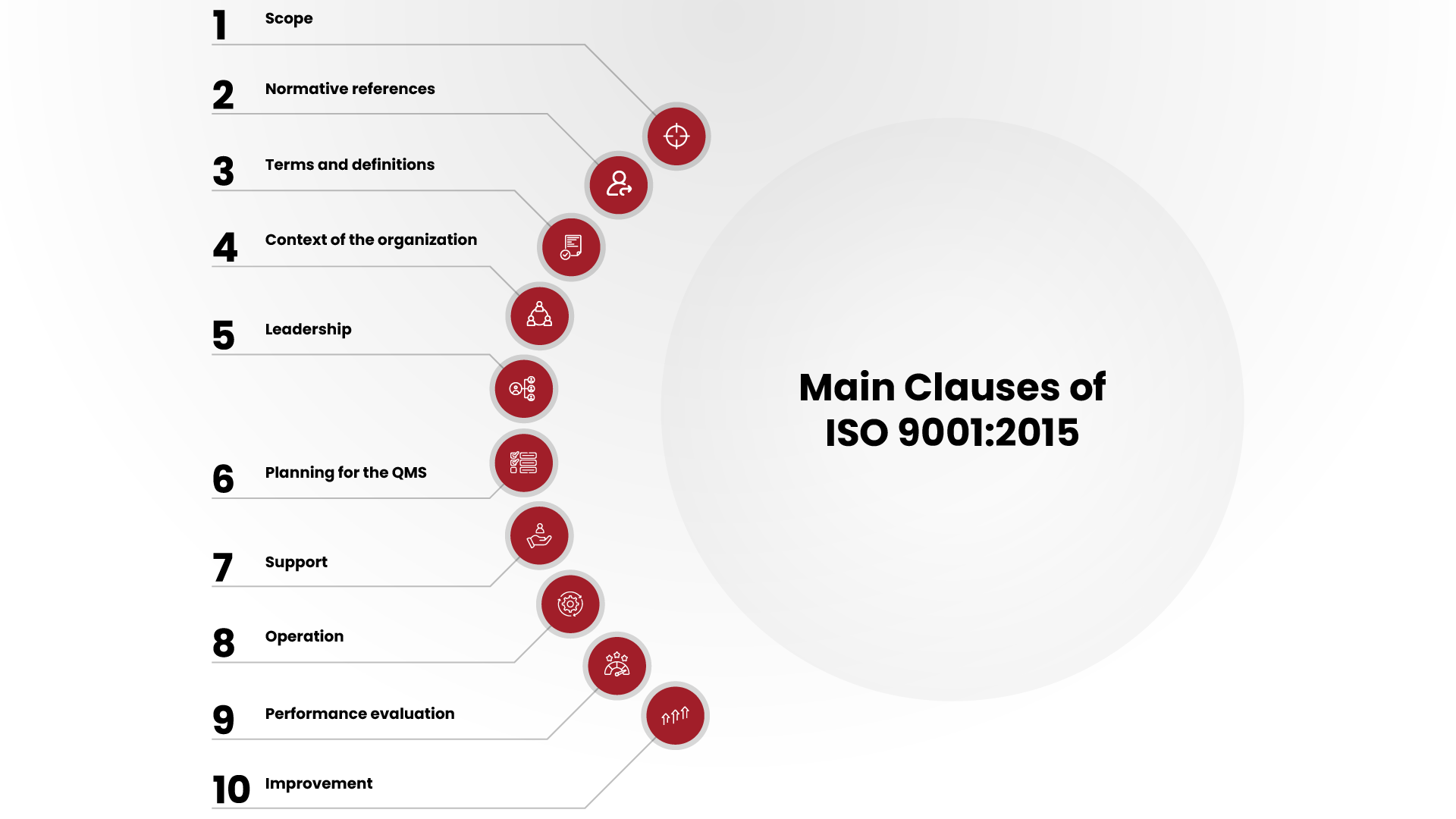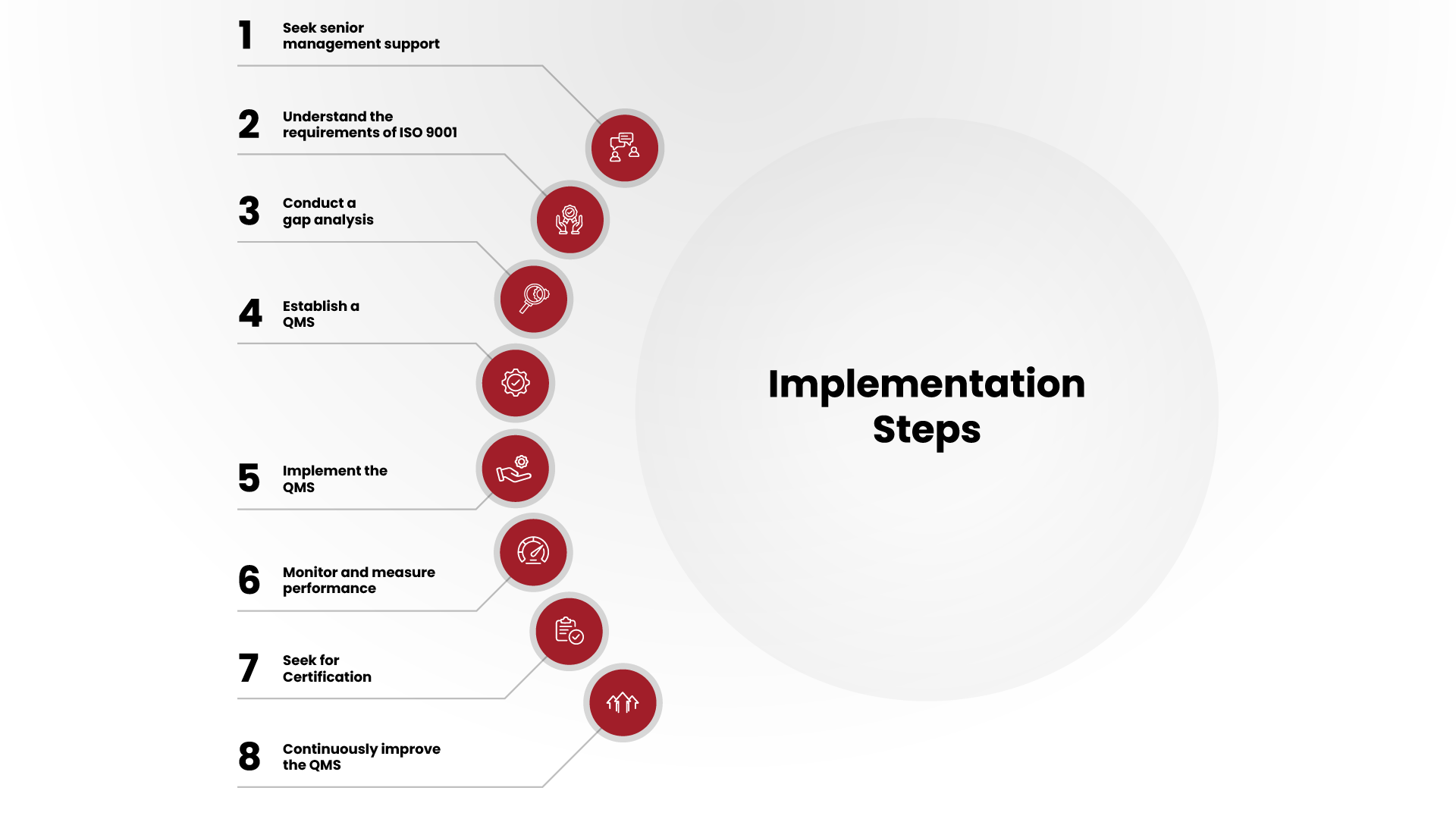

ISO 9001 is a globally recognized standard that specifies the requirements for establishing, implementing, maintaining, and continually improving a Quality Management System (QMS) in any organization.
ISO 9001 helps organizations consistently provide products and services that meet customer and regulatory requirements. It is based on seven quality management principles, and it aims to help organizations be more efficient, monitor and improve processes, reduce costs, and increase customer satisfaction.
The seven quality management principles are:

This standard’s operating principle is the Plan-Do-Check-Act (PDCA) cycle which is a quality management methodology that aims to continuously improve processes.
ISO 9001:2015 is the final edition of ISO 9001. This version was last reviewed and confirmed in 2021 and remains current.
ISO 9001’s first three clauses are introductory:
The remaining are as follows:
Organizations should analyze and determine relevant internal and external factors which affect their strategies, objectives, and results.
This clause involves:
Leadership and commitment are two important traits that should be demonstrated by the top management, who are mainly responsible to:
Organizations should establish strategic objectives and guiding principles for the overall QMS process. Clause 6 of ISO 9001 outlines the requirements for planning the QMS of organizations. It covers more on the actions to address risks and opportunities, quality objectives and how to achieve them, and the needed changes.
In order to function, organizations need various resources such as people, equipment, infrastructure, etc. In this clause, requirements specifically cover the resources, competence, awareness, communication, and documented information.
This clause is concerned with the phase when organizations put into operation the planned QMS. It includes:
The primary purpose of this clause is to establish a system of monitoring, measurement, analysis, and evaluation of the QMS's performance. It requires permanent monitoring of the system.
This clause includes identifying and implementing changes needed to improve the process and meet customer requirements. Management systems can be continually improved by using quality policies, objectives, and audit results, monitoring of events, indicators, risk analysis, corrective actions, and management reviews.

The key implementation steps of ISO 9001 are:

The implementation of ISO 9001 requires the support and commitment of senior management and their active involvement in the process. They need to understand the benefits of ISO 9001 and then allocate the necessary resources for its implementation.
Before implementing the ISO 9001 standard, it is important to get familiar with the standard, understand its requirements, and learn its basic structure, principles, and concepts. Implementers need to read the standard, review the requirements of the ten sections, which cover different aspects of a quality management system, and identify the requirements that apply to your organization. Understanding the requirements of the standard is crucial for a successful implementation.
Once there is an understanding of the requirements of ISO 9001, the next step is to identify the gaps between your organization's current practices and ISO 9001 requirements. Organizations should develop an action plan to address the gaps, and they should define roles and responsibilities for implementing the action plan. The gap analysis will help to identify the areas where your organization needs to improve to meet the standard.
Establishing a QMS requires a structured and systematic approach and involves several actions. To establish a QMS, organizations need to identify the key responsibilities within the organization and determine roles among the staff.
The next step is to develop policies, procedures, and strategies, which will guide the implementation and creation of documents such as the quality manual. Furthermore, organizations should also establish measurable specific objectives, which should be communicated to all employees and should regularly be tracked.
Organizations should implement a QMS based on the policies, plans, and objectives established previously. They should carefully follow all the requirements and implement all the necessary activities.
To ensure that your quality management system is effective, organizations need to monitor and measure its performance, which can be done through established metrics and key performance indicators (KPIs). They should monitor and measure the performance of the processes, products, and services and conduct internal audits to identify areas where your organization can improve.
The ISO 9001 certification process can be initiated once the QMS has been operational for three or six months. The organization's QMS should first be evaluated by an accredited auditor. If everything has been successfully implemented in accordance with all ISO 9001 requirements and effective thus far, the organization will be granted the ISO 9001 certification.
Continually analyze the results of monitoring and measurement activities to identify opportunities for improvement. Implement corrective and preventive actions to address issues and prevent them from occurring in the future. Continuously improve your quality management system to ensure that it remains effective.
Implementing ISO 9001 can be a challenging process, especially if organizations face difficulties such as:
PECB training courses are tailored to increase the skills and expertise of professionals and help overcome challenges that may come up when implementing ISO 9001.
PECB offers four ISO 9001 Quality Management training courses:
About the Author
Vlerë Hyseni is the Digital Content Officer at PECB. She is in charge of doing research, creating, and developing digital content for a variety of industries. If you have any questions, please do not hesitate to contact her at: content@pecb.com.